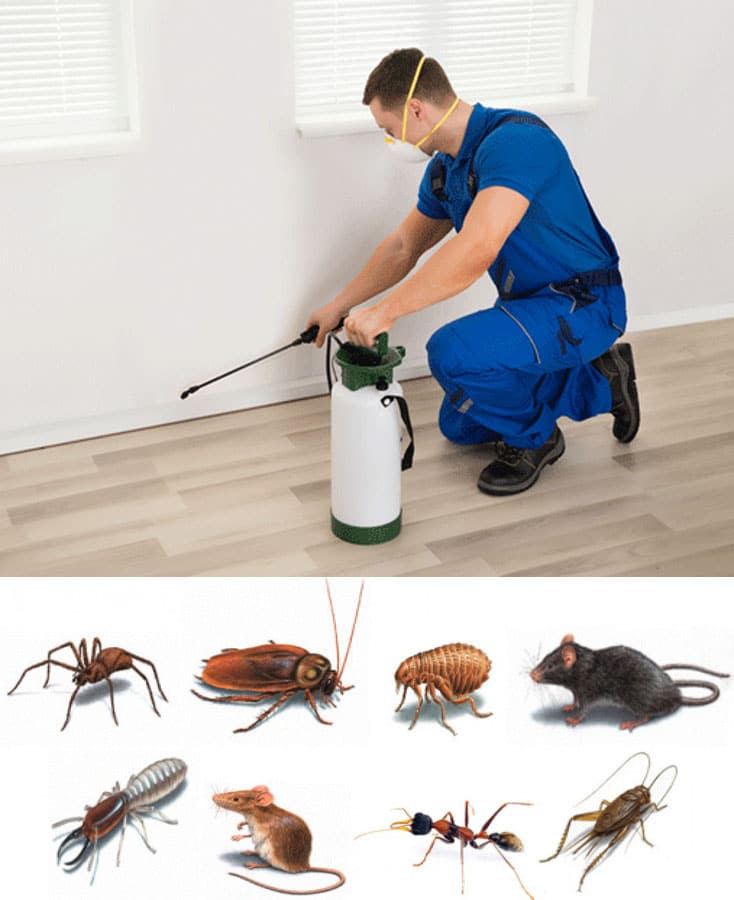A1 Charlotte Pest Control Companies - Your Neighborhood Pest Specialists
Bed Bug Treatment Malfunction: Comparing Chemical Vs. Non-Chemical Solutions
In the world of pest control, particularly when taking care of the relentless concern of bed bugs, the choice between chemical and non-chemical therapy solutions can be a crucial one. Both techniques offer distinct advantages and disadvantages, affecting factors such as performance, safety considerations, and general expense. By checking out the nuanced details of each technique, a more clear understanding of which course to go after in resolving a bed bug problem can be attained.
Effectiveness of Chemical Treatments
Chemical therapies for bed pest problems have actually been extensively identified for their rapid and potent efficacy in removing these parasites. When considering the performance of chemical therapies, it is crucial to understand that they can supply a extensive and fast solution to a bed pest trouble. Expert pest control specialists commonly rely on insecticides to target bed bugs at numerous stages of their life cycle, consisting of eggs, adults, and nymphs. These chemicals generally function by interfering with the bed pests' anxious system, resulting in paralysis and eventual death.
Furthermore, chemical therapies have the advantage of supplying recurring impacts, meaning that they can remain to eliminate bed insects also after the preliminary application. This recurring action is specifically valuable in combating any type of possible re-infestations. Additionally, the fast activity of chemical treatments can bring alleviation to individuals dealing with extreme bed bug invasions, permitting them to restore control of their home quickly.
Security Worries With Chemical Solutions
When making use of chemical remedies for bed pest therapy is making sure the safety and security of occupants and the environment,One essential aspect that requires careful consideration. While chemical treatments can be effective in eradicating bed pests, they might pose threats otherwise managed correctly. Among the main safety concerns with chemical remedies is the prospective damage they can cause to human wellness. Direct exposure to certain chemicals made use of in bed insect therapies can cause respiratory issues, skin inflammation, or other adverse responses, especially in people with pre-existing problems or sensitivities. Furthermore, inappropriate application or dosage of chemical pesticides can result in poisonous residues lingering in the cured area, posing lasting health and wellness threats to owners.
Furthermore, the ecological influence of chemical services is an additional significant factor to consider. Some pesticides utilized in bed pest treatments might be damaging to beneficial bugs, wild animals, and communities if they leach into the soil or water systems. It is necessary to use chemical therapies sensibly, complying with safety and security standards, and thinking about much less hazardous choices to mitigate these risks and make sure the reliable and secure administration of bed bug invasions.
Advantages of Non-Chemical Strategies
Considering the potential security issues and ecological influence connected with chemical solutions for bed pest treatment, discovering non-chemical strategies offers an appealing alternative with numerous distinct advantages. Non-chemical therapies are environmentally pleasant, as they do not contribute to air or water air pollution, making them a lasting option for insect control.
In addition, non-chemical services can be efficient in targeting bed bugs, consisting of hard-to-reach areas where chemical treatments might not permeate. Techniques such as warmth treatment, vacuuming, heavy steam cleansing, and bed mattress encasements supply extensive removal without making use of damaging chemicals. Moreover, non-chemical techniques can be much less disruptive, needing minimal prep work and permitting for quicker reentry into treated locations. In general, choosing non-chemical bed bug therapy approaches not only focuses on safety and security and environmental management however also makes certain thorough and reliable bug control.
Limitations of Non-Chemical Treatments

Additionally, non-chemical therapies usually require several applications to attain successful removal. This can be taxing and might not always ensure full removal of all bed insects and their eggs, especially in hard-to-reach or covert locations.
Moreover, the success of non-chemical therapies greatly counts on appropriate execution and thoroughness, which can be testing for people without specialist proficiency. Inadequate application of non-chemical techniques might lead to insufficient elimination, leading to consistent invasions and the requirement for extra treatments.
As a result, while non-chemical therapies have their benefits, it is vital to recognize these constraints and consider them when determining one of the most reliable approach for handling bed pest infestations.
Expense Comparison: Chemical Vs. Non-Chemical Options
Given the limitations linked with non-chemical treatments, a vital element to assess in the context of bed bug management is the cost comparison between chemical and non-chemical alternatives. Chemical therapies commonly include the application of pesticides by specialists, which can range from $250 to $900 per room, relying on the intensity of the problem and the size of the location to be dealt with. In contrast, non-chemical therapies like heat therapy or heavy steam can be extra costly, with costs varying from $1,000 to $6,000 for a whole home. While the preliminary cost of chemical therapies may seem lower, numerous treatments might be needed to fully eliminate the infestation, possibly enhancing the total expense. On the other hand, non-chemical alternatives might supply a more green and sustainable service, although they can be cost-prohibitive for some people. Ultimately, when considering the cost of bed pest treatment options, it is essential to evaluate the ahead of time expenditures against the efficiency and lasting sustainability of the selected technique.
Conclusion

Considering the prospective safety more and security issues and ecological impact associated with chemical services for bed insect therapy, checking out non-chemical strategies presents a promising alternative with numerous this website distinct advantages.Provided the limitations connected with non-chemical treatments, an essential element to evaluate in the context of bed bug administration is the expense contrast in between chemical and non-chemical choices. In comparison, non-chemical therapies like warmth therapy or vapor can be more expensive, with prices varying from $1,000 to $6,000 for a whole home. While the first price of chemical therapies may seem lower, multiple treatments might be called for to completely get rid of the problem, potentially boosting the general expense.In verdict, when contrasting chemical and non-chemical bed pest therapy choices, it is crucial to take into consideration effectiveness, safety, advantages, restrictions, and cost.